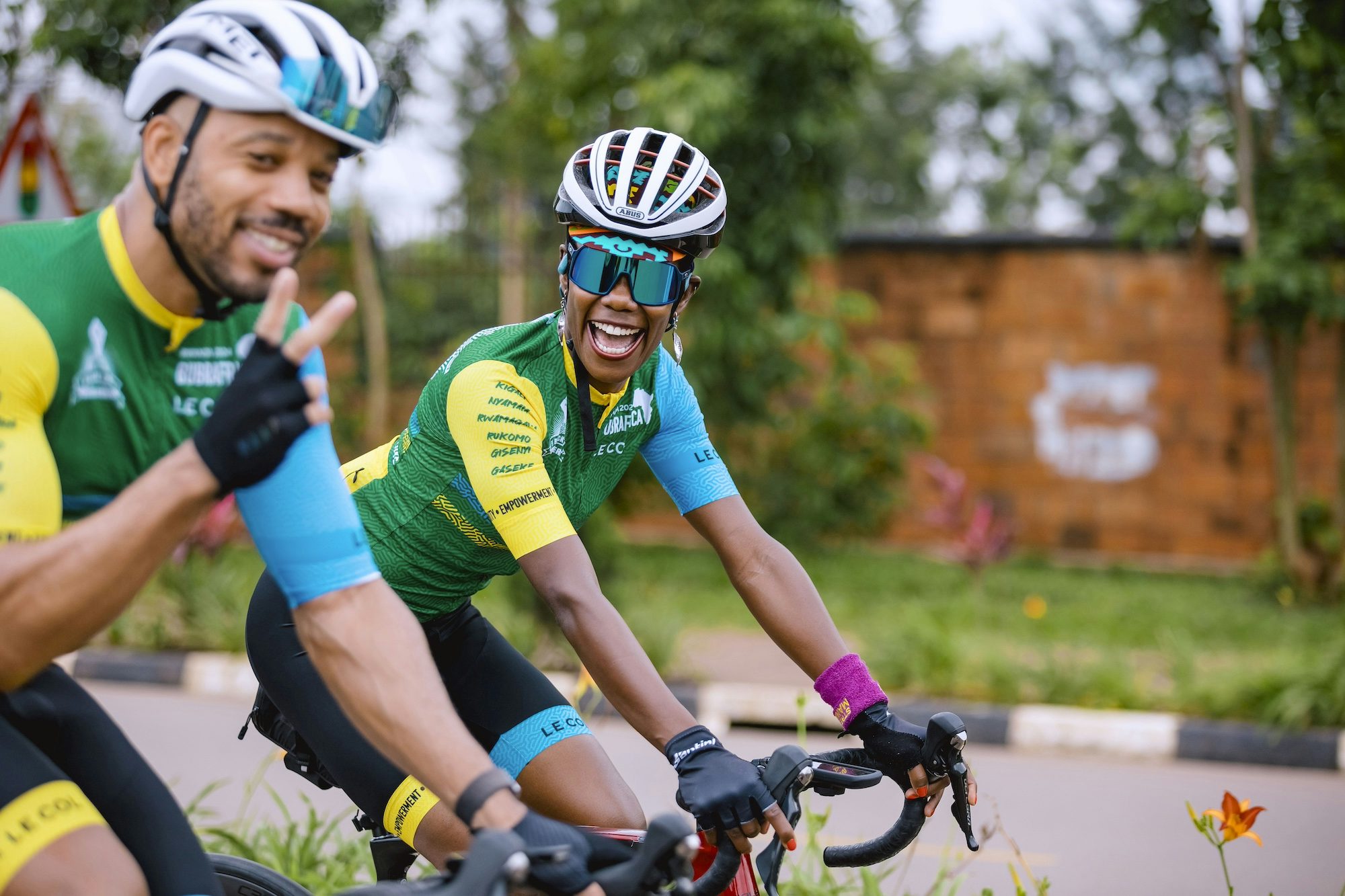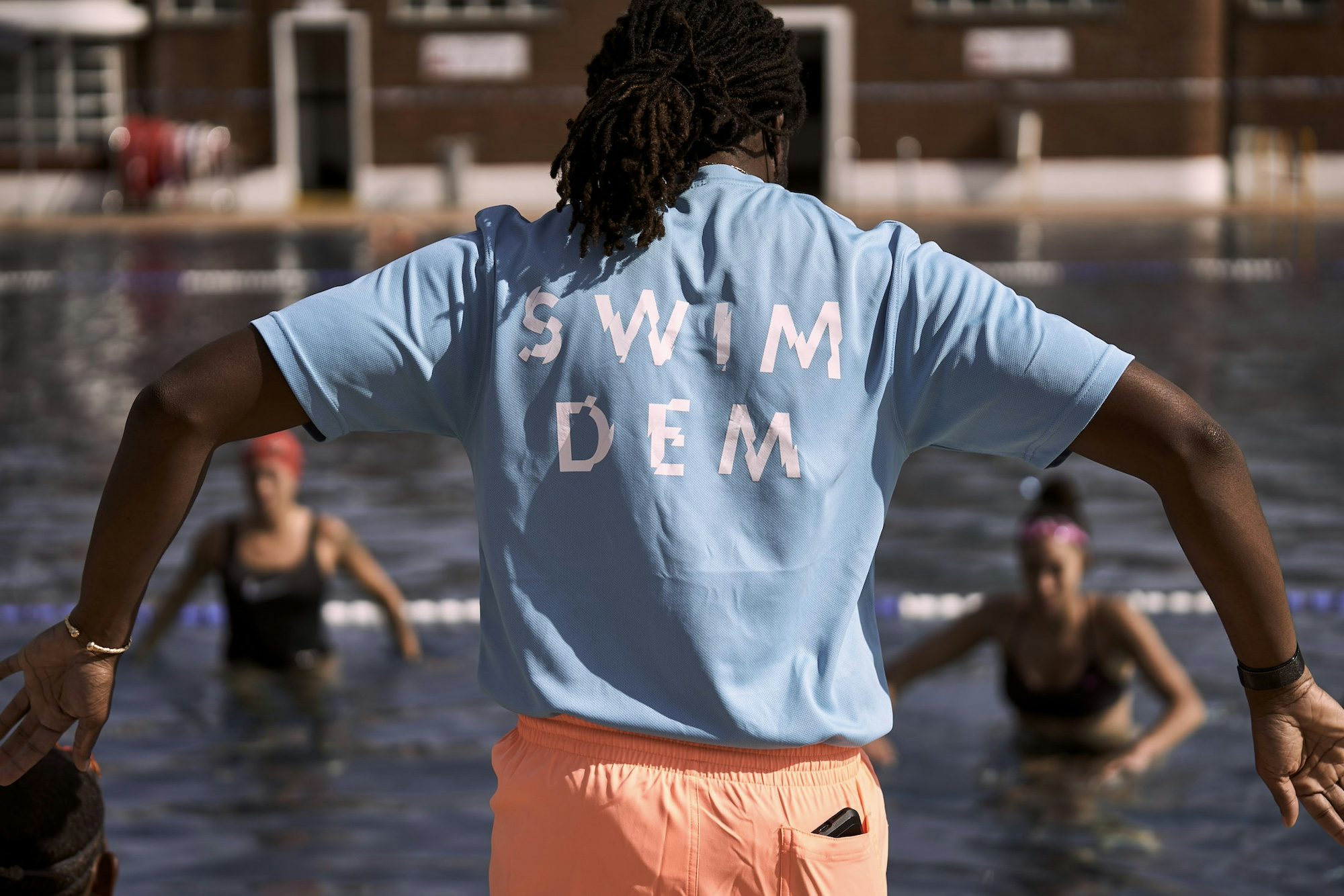Wearing it on your sleeve: using design for representation in sport
As the 2024 Paris Olympics approaches, diversity and inclusion remains an issue for elite sport. But at the community level, clubs are taking matters into their own hands, using branding and kit design to remake sport in their own image
After creating T-shirts for Queer Running Club (QRC), founder Kole Fulmine and designer Hannah Dickins began to see people wearing them – not on their way to the park or a club run, but “just walking around doing their groceries”, Dickins says. As something that previously “just wouldn’t happen”, the pair started to identify a shift to sports clubs edging towards being “a bit cooler”. Spotting the T-shirt around east London seemed to show that membership was “something they are really proud of”, says Fulmine.
Perhaps this is less surprising when clubs like QRC design to members’ cultural touchpoints over those of traditional sport. Fulmine, also a personal trainer, researcher and writer, founded QRC after finding a lack of queer representation in other clubs, and in contrast to some “very serious clubs”, they wanted QRC to be “a place where the queer community can come to meet one another”.
Dickins, a signwriter, graphic designer and artist, took inspiration for QRC’s neon-veined identity from raves and nightlife, long queer community safe spaces. The designs also skew “intergalactic”, inspired by – “I don’t know if we want to print this”, Fulmine interjects – “Tron”. Sessions take place in the dark most of the year, points out Dickins; the T-shirts display the QRC lettermark wrapped around a glowing moon.

“We’re trying to queer the status quo of what you would have on a sports strip,” Dickins explains. The designs aim to “look queer without spelling it out”, which is “more about a vibe than anything else”, she adds. “Energy” wins over “sportiness”. “It’s just about making people feel powerful”.
Following bans by sporting bodies that prevent trans athletes from racing in the categories with which they identify, QRC is running its own events in Hackney this month exclusively for queer and trans people. Named Transcend, with ethereal branding by Dickins, the event is timed as a warm-up to London Trans+ Pride, with DJs and drag performers.
“Queer and trans people need to be seen in races, and I think having a T-shirt very clearly does that job,” Fulmine says. “I’m representing my club, I’m representing my crew, but I’m also representing my lived experience and being a visible queer and trans person in sport, which is so dominated by cis, het, white people.”

Fulmine has also founded a booking platform, or “queer ClassPass”, called Bend, bringing together queer-led classes from yoga to boxing. “When we onboard a class we say that it’s a fundamental part of your class to have a design and have an ethos behind that class,” they say, which Dickins often helps with.
“What’s fundamental with all of these queer and trans spaces, [is that] most people who are coming to them have experienced a trauma in sports, so they are coming to us as an alternative,” they say. As a leader, there is a responsibility to “signpost” these spaces, Fulmine adds. “[QRC] has become a very sacred space for all of us.”
Even after years of racing, elite cyclist Josh Jones struggled to identify teams where he would “really fit in”. With a stark lack of LGBTQ+ role models in cycling, particularly at higher levels, he decided to take action and create All In racing in 2021. “It was this idea of, if not me, then who am I actually expecting to do anything about it?” Aiming to make cycling “more welcoming and inclusive to LGBTQ+ people”, All In’s wider activities span consulting to public-facing projects, looking to “show the benefits that authentic inclusion can bring”.

For All In’s logo, he adapted the open-source sans-serif Gilbert, named after Gilbert Baker, designer of the Pride flag. But Jones explains that for sanctioned events, kit is required to eschew political symbols. The racing kit, designed with Rapha, contains the rainbow colours and is bright enough to “dominate any images”, but the all-over print more subtly mirrors the colour relationships of the logo over the flag’s recognisable stripes.
With new policies on transgender participation “removing pathways for people to compete authentically in sport”, says Jones, All In is now focusing more of its efforts at the community level. A flagship project adapts the long-running Stonewall campaign, #RainbowLaces, where athletes swap out their regular shoelaces in solidarity. In cycling, where shoes typically use a different type of closure, All In and Rapha produced white socks with a rainbow band; for the uninitiated, tall white socks are an obsession for elite and amateur cyclists alike.
I’m representing my club, I’m representing my crew, but I’m also representing my lived experience and being a visible queer and trans person in sport
Jones notes that the simplicity of the campaign is open to the variety of LGBTQ+ experience, and is amenable to allies bound by sponsorship restrictions, or who “at the end of the day, just like to ride or race their bike”. He adds that while inclusion, “active allyship and outspoken advocacy” are vital, starting from “a pretty low or almost completely absent base” the socks are a “way for people to engage”. Many tag All In on social media, and resharing amplifies the message that “there are other people who share that same enthusiasm for inclusion […] and all want the same thing out of cycling”, Jones says.
Proceeds from the socks part-funded sponsorship of the UCI 2022 Andover Supercross event, and like any race sponsor, All In’s logo ran on banners surrounding the course, visible in event photos shared afterwards. At a time when cycling sponsorship is drying up, this event was notably the “first internationally sanctioned race that was explicitly funded by LGBTQ+ people and allies – and was a race that wouldn’t otherwise have happened without our support”, he adds.


Given elitist associations around Lycra-clad cyclists, kit design had not been on the mind of Tokunbo Ajasa-Oluwa when he co-founded Black Unity Bike Ride (BUBR) in 2020, however. Set up in the wake of George Floyd’s murder, Ajasa-Oluwa sought to use his interest in cycling to create an event “focused on empowerment rather than protest”, while testing the myth that “Black people didn’t ride bikes”.
A background in journalism and community organising underscored the importance of storytelling, and he worked with Ahmed Akasha of D237 to design BUBR’s first visuals. Combining the raised fist of solidarity, a bicycle and the Pan-African colours of black, red and green, it aimed to communicate core values: unity, empowerment and love.
Publicised by anonymous flyers, the event drew 1,500 Black and brown cyclists of all ages and abilities in just two weeks. Now approaching the fifth annual ride, BUBR, which has recently achieved charity status, also offers monthly training at the Queen Elizabeth Olympic Park’s velopark and velodrome – “Spaces that are not as frequented by the community as one would think,” he says, given the diversity of the surrounding boroughs.

Not a club itself, but more of a “salad bowl”, says Ajasa-Oluwa, BUBR supports a growing alliance of many diverse-led clubs. Despite this, people asked for a BUBR kit to signal “being part of something that transcends any particular club affiliation”, he suggests. There are also slogan tees, sweatbands and a calendar.
The kit, designed by Billy Pittson of Activated Creatives and produced by Le Col, looks to combine a “Pan-African empowerment narrative”, with an “element of cool”, including a print inspired by mid-90s A Tribe Called Quest album covers. “We’re not trying to bring Black people to cycling; we’re trying to bring cycling to Black people,” he says. Rather than looking to “assimilate or mimic the status quo; it’s about being your authentic self and celebrating the fact that you love cycling”.
Founded in 2013, Swim Dem Crew is a London club offering swimming lessons and time in the water “as a tool to empower self-development and mental wellbeing” explains co-founder Peigh Asante. When Asante first took to the pool after a running injury, he found just “mums and babies and over-60s … I didn’t see people like me in the water”. After meeting co-founders Nathaniel Cole and Emily Deyn and beginning to swim together, others soon asked to join them. “They could see the self-improvement, all of the positives of being in the water, and I think they wanted a bit of that Kool Aid,” Asante hazards.


An art director by trade, it felt natural to use his creative experience to “feed back into swimming and vice versa”, says Asante. The team has produced documentary films to raise awareness of mental health and its relationship to sport, and while swimming kit is a little more brief than that of other sports, there are SDC hats, T-shirts and pool slides featuring a rippled logo designed by Lauren Harewood of Soake, who swims with SDC.
Like many of these groups, activism stretches beyond their local community. SDC participated in the 34th Dakar-Gorée swim, which pays homage to victims of slavery in the region, and created a limited-edition T-shirt whose design takes inspiration from the history of Senegalese flags and features the coordinates of the open water swim.
BUBR runs cycling trips to African countries, fundraising for local NGOs; for its 2024 trip to Rwanda, a special kit translates BUBR design codes into Rwanda’s blue, yellow and green. QRC created a long-sleeved T-shirt to coincide with fundraising for Palestine – its slogan reads: “Run like it’s political.”




